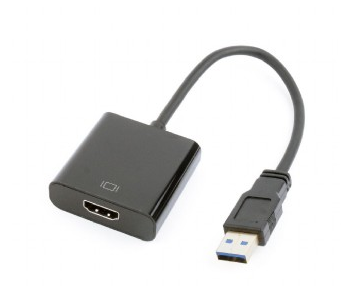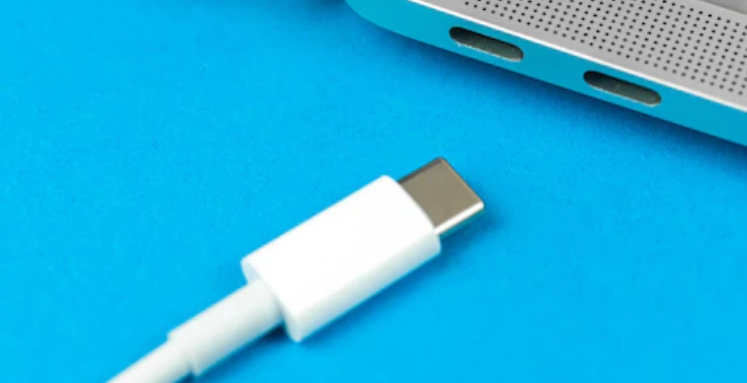PAGE CONTENT:
- 1. What Is the USB to HDMI Adapter? What Is It Used For?
- 2. What's the Difference Between USB and HDMI
- 3. The Working Principle of USB to HDMI Adapter
- 4. How to Use A USB to HDMI Adapter in Windows 10?
- 5. What's the Difference Between USB C to HDMI & USB to HDMI Adapter?
What Is the USB to HDMI Adapter? What Is It Used For?
A USB to HDMI (High Definition Multimedia Interface) adapter is a device that allows you to connect a USB port to an HDMI-enabled device. This type of adapter is most commonly used to connect a computer or laptop to an HDTV or other multimedia displays.

It is often the case that a traditional computer comes with one HDMI port and two USB ports. If the HDMI port is occupied by another device or damaged, a USB to HDMI adapter becomes a necessity to connect your computer to the display. Moreover, some laptops have even removed the HDMI interface, making it difficult to connect the computer to a projector or TV display. A USB HDMI adapter can help you in this case as well.
What's the Difference Between USB and HDMI
They are different mainly in two aspects:
Function: USB is a hardware interface that can be used to connect some external devices like keyboards, mice, mobile devices, etc. One of its pros is broad compatibility, compatible with various data formats. While HDMI is a type of audio/video interface that can transmit audio/video to high-definition devices, like projectors, HDTVs, monitors, etc.
Speed: HDMI takes advantage of high speed while transferring videos and audio. USB is a little slower than HDMI.
The Working Principle of USB to HDMI Adapter
USB to HDMI adapters work by taking the USB signal from a computer and converting it into an HDMI signal. It helps you to connect your computer to an HDMI-equipped display, such as a monitor or television. The adapters typically come with software that needs to be installed on the computer in order to work properly. Once the software is installed, the adapter will appear as an additional display device in the computer's Display settings. You can then select the USB to HDMI adapter as your primary display, extend your desktop across both displays, or mirror your main display on the USB-connected device. USB to HDMI adapters are relatively simple devices, but they can be a valuable addition to your computing setup.
How to Use A USB to HDMI Adapter in Windows 10?
Using a USB to HDMI adapter is simple.
Step 1. Connect the adapter to your computer's USB port using the USB head.
Step 2. Connect the other end of the adapter to an HDMI-enabled device.
Step 3. Once the connection is finished, you can view high-definition content from your computer on your HDTV. You may also need to adjust your PC's display settings to optimize the image quality.
What's the Difference Between USB C to HDMI & USB to HDMI Adapter?
USB Type-C is the latest USB standard, and it's rapidly gaining popularity thanks to its small size and support for USB 3.1 data transfer speeds. However, USB Type-C is still not as widely used as older USB standards like USB Type-A. As a result, many devices still rely on older USB standards for connectivity. If you want to connect a device with a USB Type-C port to a projector or TV with an HDMI input, you'll need to use a USB to HDMI adapter.

USB to HDMI Converters come in two main types: active and passive. Active adapters are typically more expensive but offer better performance and compatibility. Passive adapters are less expensive but may not work with all devices. When choosing a USB to HDMI adapter, it's essential to ensure that it's compatible with your device and supports the resolution and features you need.
Sum Up
So much for this, we sincerely hope the article will give you a clear understanding of USB to HDMI adapters. It includes not only the definition and working principle but also how it works and the differences between USB Type-C to HDMI. Please read it and use the adapter properly.
Was This Page Helpful?
Updated by Larissa
Larissa has rich experience in writing technical articles and is now a professional editor at EaseUS. She is good at writing articles about data recovery, disk cloning, disk partitioning, data backup, and other related knowledge. Her detailed and ultimate guides help users find effective solutions to their problems. She is fond of traveling, reading, and riding in her spare time.
Related Articles
-
What Is Minimum Processor State? Everything You Need to Know
 Daisy/2025-06-30
Daisy/2025-06-30 -
All About Novo Button [2025 Full Guide]
 Rel/2025-06-30
Rel/2025-06-30 -
What Is VSync and When Should You Turn it On? [Full Information]
 Daisy/2025-06-30
Daisy/2025-06-30 -
How Do I Fix 'This PC Can't Run Windows 11' Error? Your Complete Guide Is Here
 Tracy King/2025-06-30
Tracy King/2025-06-30